Best Data Processing Tools to Buy in November 2025
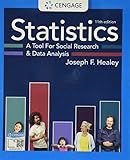
Statistics: A Tool for Social Research and Data Analysis (MindTap Course List)


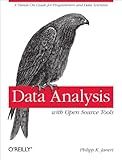
Data Analysis with Open Source Tools: A Hands-On Guide for Programmers and Data Scientists


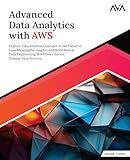
Advanced Data Analytics with AWS: Explore Data Analysis Concepts in the Cloud to Gain Meaningful Insights and Build Robust Data Engineering Workflows Across Diverse Data Sources (English Edition)


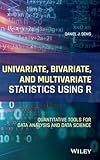
Univariate, Bivariate, and Multivariate Statistics Using R: Quantitative Tools for Data Analysis and Data Science


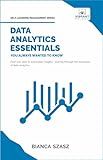
Data Analytics Essentials You Always Wanted To Know : A Practical Guide to Data Analysis Tools and Techniques, Big Data, and Real-World Application for Beginners (Self-Learning Management Series)


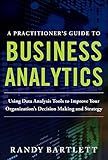
A PRACTITIONER'S GUIDE TO BUSINESS ANALYTICS: Using Data Analysis Tools to Improve Your Organization’s Decision Making and Strategy
- AFFORDABLE PRICING SAVES READERS MONEY ON QUALITY LITERATURE.
- ENVIRONMENTALLY FRIENDLY CHOICE: REDUCE, REUSE, RECYCLE BOOKS.
- UNIQUE FINDS: DIVERSE SELECTION OF TITLES NOT AVAILABLE NEW.


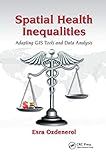
Spatial Health Inequalities: Adapting GIS Tools and Data Analysis


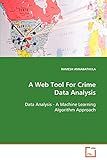
A Web Tool For Crime Data Analysis: Data Analysis - A Machine Learning Algorithm Approach


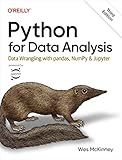
Python for Data Analysis: Data Wrangling with pandas, NumPy, and Jupyter


To aggregate by month in pandas, you first need to have a datetime column in your dataframe. You can convert a column to datetime format using the pd.to_datetime() function. Once you have a datetime column, you can use the groupby() function along with the pd.Grouper(freq='M') parameter to group the data by month. Finally, you can use the agg() function to perform aggregation operations, such as sum, mean, or count, on the grouped data. By following these steps, you can easily aggregate your data by month in pandas.
What is the purpose of aggregating data by month in pandas?
Aggregating data by month in pandas allows for the analysis and visualization of data on a monthly basis, which can help identify trends, patterns, and seasonality in the data. This can be particularly useful for time series data or data that is collected over a period of time. Aggregating data by month also helps in summarizing and condensing large datasets into a more manageable form for further analysis and reporting.
How to count occurrences by month in pandas?
You can count occurrences by month in pandas by following these steps:
- Convert the date column to datetime format if it's not already in that format.
- Extract the month from the date column and create a new column for it.
- Use the groupby() function to group the data by month and count the occurrences.
- Optionally, you can also sort the data by month.
Here is an example code snippet to count occurrences by month in pandas:
import pandas as pd
Create a sample DataFrame
data = {'date': ['2021-01-05', '2021-02-12', '2021-01-18', '2021-03-22', '2021-02-09']} df = pd.DataFrame(data)
Convert the date column to datetime format
df['date'] = pd.to_datetime(df['date'])
Extract the month from date column and create a new column
df['month'] = df['date'].dt.month
Group by month and count occurrences
count_by_month = df.groupby('month').size().reset_index(name='count')
Sort the data by month
count_by_month = count_by_month.sort_values('month')
print(count_by_month)
This code will output the number of occurrences for each month in the DataFrame.
How to group by month and calculate variance in pandas?
You can group by month and calculate variance in pandas by first converting the date column to a datetime format, then extracting the month from the date column, grouping by the month, and then calculating the variance of the values in each group.
Here is an example code snippet to achieve this:
import pandas as pd
Create a sample DataFrame
data = {'date': ['2022-01-01', '2022-01-15', '2022-02-01', '2022-02-15', '2022-03-01'], 'value': [10, 15, 20, 25, 30]} df = pd.DataFrame(data)
Convert the date column to datetime format
df['date'] = pd.to_datetime(df['date'])
Extract the month from the date column
df['month'] = df['date'].dt.month
Group by month and calculate variance
result = df.groupby('month')['value'].var()
print(result)
This code will output the variance of the 'value' column for each month in the DataFrame.
How to group by month and calculate kurtosis in pandas?
You can group by month and calculate the kurtosis using the following steps in pandas:
- Import the necessary libraries:
import pandas as pd
- Create a sample DataFrame:
data = {'date': pd.date_range(start='1/1/2020', periods=100, freq='D'), 'value': np.random.randn(100)} df = pd.DataFrame(data)
- Group by month and calculate kurtosis:
df['month'] = df['date'].dt.month kurtosis_by_month = df.groupby('month')['value'].apply(lambda x: x.kurtosis()) print(kurtosis_by_month)
This will group the data by month and calculate the kurtosis for each month in the 'value' column.
What is the significance of grouping data by month in pandas?
Grouping data by month in pandas allows for easier analysis and visualization of time series data. By grouping data into months, it becomes easier to track trends, seasonality, and patterns over time. This can be particularly useful for examining monthly patterns in data such as sales, website traffic, or financial data. Grouping data by month also enables the calculation of monthly averages, totals, and other summary statistics, which can provide valuable insights for decision-making.Overall, grouping data by month helps to simplify and organize time series data, making it easier to identify and analyze patterns and trends over time.
